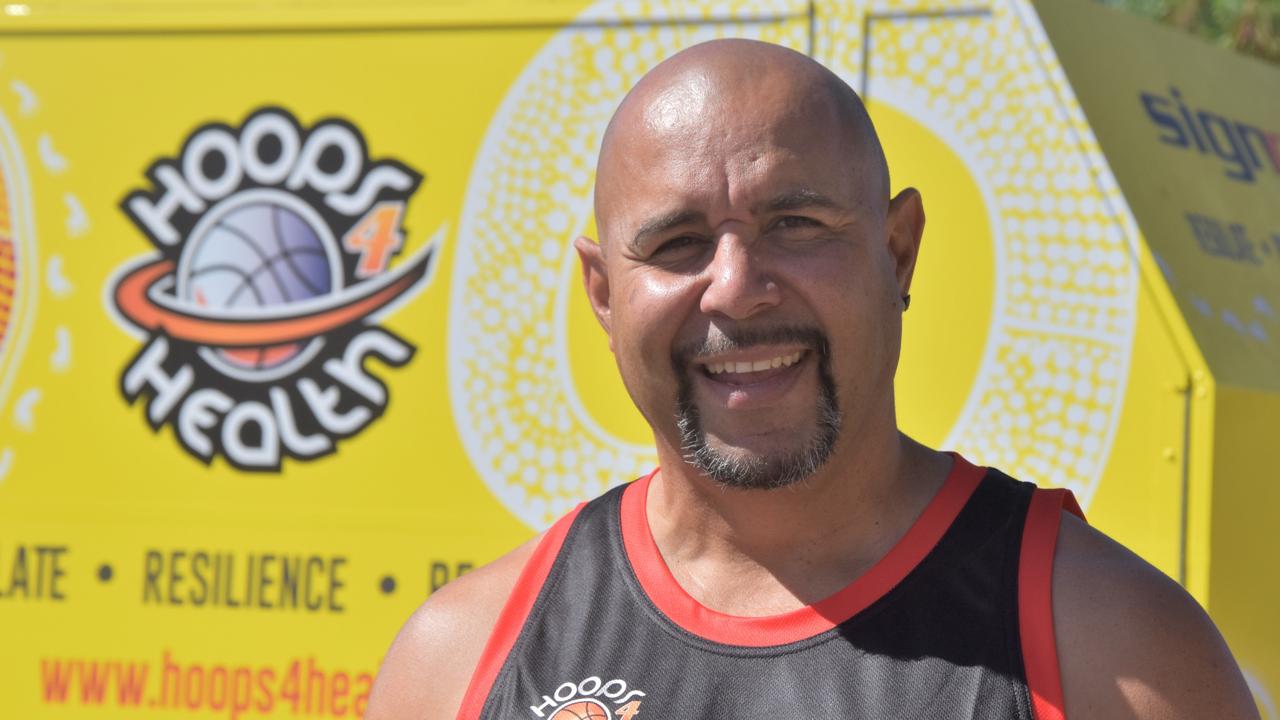Palmerston, NT Closing the Gap efforts should start with kids
Three staunch human rights advocates have outlined the key to closing Palmerston’s – and the Territory’s – gap between Indigenous and non Indigenous kids. Read their stories.
Closing the Gap efforts must start with Australia’s kids, a human-rights activist says.
Timmy Duggan OAM said the Aboriginal Deaths in Custody and Bringing Them Home reports highlighted the ‘urgent national crisis’ of the Gap more than 25 years ago.
But as a history of generational trauma continues to weigh on the Territory’s Aboriginal kids, he said it was clear more needed to be done to give today’s young people “doses of resilience”.
“We can have an impact on them while their brain is still developing and provide good, positive experience, good, positive Aboriginal role models that they see day in and day out,” he said.

The Territory’s first NBL player combined his sporting career and knowledge of Aboriginal health to launch Hoops 4 Health in 2002, with hopes to drive better outcomes for the NT’s kids.
The organisation’s first base is set to open in about six weeks in one of Palmerston’s northern suburbs.
Palmerston is home to 7.9 per cent of the Territory’s Indigenous population, according to 2021 census data from the Australian Bureau of Statistics.
Mr Duggan said the organisation started as a way to give back to the NT community and engage with kids in the Palmerston and Darwin areas.
Following a royal commission into the protection and detention of children in the NT, he said he was spurred into action and has not missed a weekend session with the kids in Don Dale Youth Detention Centre since 2016.
The latest Productivity Commission data shows 96 per cent of Territory kids in detention are Indigenous, with First Nations children locked up at a rate 33 times higher than non-Indigenous children.
In the six months from January to June 31, 2022, Territory Families confirmed there were 37 self harm incidents, and 56 times where children threatened to take their own lives.
“We can embed some good concepts around leadership and resilience in our young people, we don’t want them going to Don Dale,” Mr Duggan said.
“We’ve had so many examples of kids – through longitudinal conversations – come up to us and said, ‘we don’t smoke, we don’t drink because of the presentation that you gave us’.”
Mr Duggan said Hoops 4 Health was not just about basketball – it was based on Bruce Perry’s neurosequential model for addressing trauma.
“Using the trauma-informed model and culturally-informed coaching … can have a big impact in addressing trauma and chronic traumatic experiences,” he said.
“We’ve had it through our Stolen Generation, we’ve had it through removal of our people off their lands.”
The human rights award-winner also pointed to the health benefits of the program, noting the 15-year life expectancy gap between Indigenous to non-Indigenous Australians.

Jawoyn woman Skye King recalls the first time she was made to feel her heritage marked a “big difference” between herself and her peers.
“We were in primary school and I remember we were learning about Australian history, like it was a very normal subject,” she said.
“But then I remember the teacher said something … along the lines of like, ‘we should all treat each other like normal’.
“Then one of the students said to me, ‘yeah, of course we treat you like normal’.”
The Palmerston resident said it was clear her classmate thought nothing of the comment, but the moment has stuck with her.
“I still vividly remember, ‘why did she ask me that?’ and then I kind of started to realise I’m the only brown kid in this class,” Ms King said.
“They had to kind of make a conscious effort to not treat me differently, and then obviously as you get older, you start to realise it more and more.”
Ms King said visible community heroes – such as Mr Duggan, who was nominated for the ‘Local Hero’ Australian of the Year award in 2020 – played a key role in driving generational healing.
The Palmerston resident said she used to help run three-on-three basketball competitions on Friday nights.
Ms King said she often watched as senior Aboriginal players “sparked this wonder in these kids eyes”.
“They were like superheroes, you know? And how often do kids admire superheroes?” she said.
“Just seeing one in real life is such a great thing and they do remember them forever.
“Seeing someone that can accomplish these great things that looks like you and just showing up matters at the end of the day.
“That is really what matters.”
Larrakia woman Chicarnee Pickering called for increased access to culturally-aware, community-led support for her community.
Ms Pickering said pushing mainstream services on Palmerston’s Aboriginal community “traumatised” many young kids.
The youth and family practitioner pointed to the city’s lack of flexible schools as a key problem faced by today’s children.
“Mainstream education can be rough for mob, which is why they disengage,” she said.
“Palmerston’s crime rate is big because there aren’t enough preventive or early intervention programs and strategies that are community-led.”
Ms Pickering said the city’s mental health services also needed improvement.
“They released them in Palmerston without a mental health plan,” she said.
“It traumatised mob into not reaching out for support.”
More Coverage
Originally published as Palmerston, NT Closing the Gap efforts should start with kids




